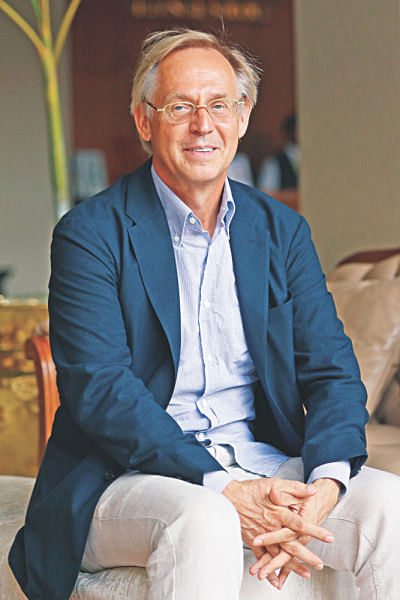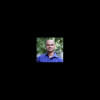The biennale is a weaving nest of experiments: Marek Bartelik

Dr Marek Bartelik is a Polish-born, New York-based art critic, art historian, and poet, highly regarded across the world for his nuanced understanding of art.
The former president of the International Association of Art Critics (AICA) and AICA USA was an observer of the 18th Asian Art Biennale Bangladesh (AABB). In an interview with The Daily Star, he shares his thoughts on the recent biennale and his beliefs on art in general.
"The biennale is more a living thing and there are multiple factors to assess it. It serves different people in different ways. A lot of components had to be put together to arrange it on a scale such as this," says Bartelik, who welcomed the decision of the biennale committee to go beyond borders, being confined to Asia and the Asia Pacific regions previously.
Marek believes the biennale has the potential to engage people and the city itself in a dynamic way, much like how the Havana Biennale exposes art to the city and its people instead of confining it to a designated place for spectators to observe.
" Next time I would like to see the building and the artworks 'talk' to each other. The building is unique; but the artworks exchange little dialogue with the aura.
Marek asserts that a close interaction between the artists, the audience and the artwork with connoisseurs is an important factor and this should be magnified in the biennale. "As you have invited people from all walks of life to experience your rich culture, it would be wonderful to display art properly," observes the art critic.
On the topic of the contemporary global art scenario and the fierce competition in the art market, Marek says it is natural for everybody to want to be recognised. "But on the other hand, sharing a sense of community—like you and I sitting together and talking about something we both care about—is very special. My transition from civil engineering to art history, for example, changed my horizons. My initial career had very few surprises, but when I delved into art, the world opened to me.
"From my experiences, art is a kind of equaliser, which allows me to see a world that I would have never seen as a civil engineer. The art world is a rendezvous of different people and creative thought. For example, when we talk about art and illumination, light and colours of expressions lead to spirituality. It is universal. Light is a thing that interests a lot of artists so we find a common ground, which uncovers the paths of unity," he says.
On the trends of contemporary art, Marek intimates, "I see a lot of it. There are many artists, who are interested in identity politics. As I grew up, I got interested in these works, which involved its share of commitments.
"In the biennale there are several works by local artists, whom I feel, are very committed. Most of these works are installations. One ceramic work seemed to me very grounded. It came with the understanding of the medium, scale and how parts fit into the whole of it. That's very important. A lot of artists are very spontaneous nowadays. People are very quick to create art. It's one kind of doing, but I like it when things come with research, responsibility and reflection. At first, you make a promise, and if you are lucky, you become a living legend."
About the strength and weakness of the biennale, Marek says that its strength is that it is open and you see a range of experiments—from solid to whimsical. "The weakness to me is that I don't think the artworks have been treated appropriately within the building," he explains.
"The building itself is an incredible structure and the works don't correspond to it. There is no dialogue between them. Next time I would like to see the building and the artworks 'talk' to each other. The building is unique; but the artworks exchange little dialogue with the aura.
"The art selection should have been thematic, research-based and meaningful. The standard of curated shows and retrospectives by contemporary master artists should be included on a larger scale. One thing which I wish to play with is the interior itself, so that the works can aesthetically mingle with each other," he adds.
He also believes that a wall is not an empty space—it serves a greater purpose than simply being covered with paintings. The wall is part of the grand composition. In his words, "Space doesn't swallow art—it makes art stand out in its own glory." So, fewer, better curated works could have made the biennale a more superior affair.





Comments